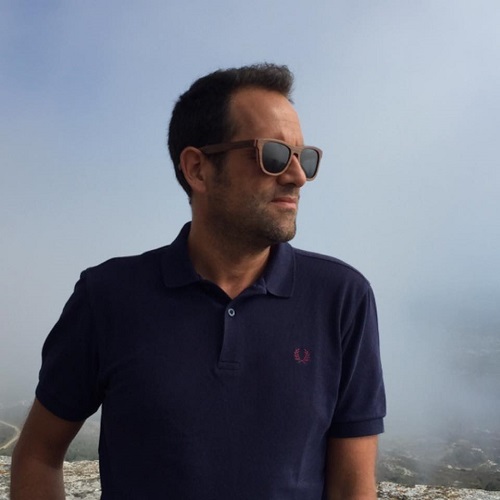João Paulo Serafim
Born in 1974 in Paris. Lives and works in Lisbon.
His work in photography manipulates reality by use of mannequins and models or through manipulation of already existing images, making fine lines of the borders between reality and the artificial.
João Paulo Serafim often exhibits his work individually; in 2008, he presented “The Improbable Museum” at the Centro Cultural da Fundação Calouste Gulbenkian of Paris and at the Museu Blanes in Montevideo. In 2006, he presented “Je t’aime moi non plus” at the project Box4 of the Galeria Silva Cintra in Rio de Janeiro and at the Galeria Baginski in Lisbon in 2005. Also, in 2005, he presented “Klauzal Tér,” at an individual exhibition at the Centro Cultural Emmerico Nunes in Sines and at the Arquivo Municipal of Lisbon – Photography.
He has participated in several collective exhibitions: in 2008 he participated in the “Paisagem & Povoamento” at the Centro Cultural Emérico Nunes in Sines, Portugal; “Nuit de l’Europe” at the Recontres d’Arles, France; “AAFNY (Affordable Art Fair of New York)”, New York, USA; and “Substance” in Spike Island, Bristol, UK. In 2007 he participated in “Remembering Jack Kerouac” at Espaço Avenida, Lisbon; “Open Studio do Sítio das Artes” at CAMJAP/Fundação Calouste Gulbenkian in Lisbon; “Young Art Europe 2007,” at Moya– Museum of Young Art, in Vienna, Austria; and “Homo Migratus” at the Fundação Calouste Gulbenkian in Lisbon, Portugal.
Since 2007, he has participated in the production of various theatre pieces like: “Ensaio/Essay” by Victor Hugo Pontes, “Lar Doce Lar” by Maria Gil, and “Passeio ao Norte 1963” by Joana Craveiro, João Paulo Serafim and Gonçalo Alegria.
In 2006, he won the Fotografia da Purificación García award.
João Paulo Serafim has represented his work in various important collections like: Museu MACE, collection of António Cachola em Elvas, Fundação PLMJ in Lisbon as well as in the collections of the Banco Privado, Centro de Arte Moderna da Fundação Calouste Gulbenkian and in the BES-ART of the Banco Espírito Santo collection; In Spain he has a work found in the Purificación García collection.
Source: https://hangar.com.pt/

